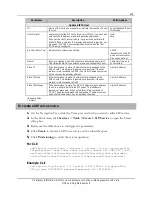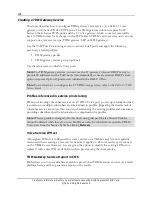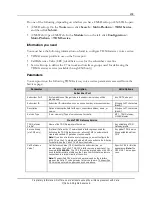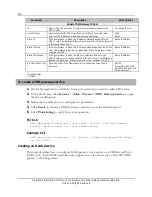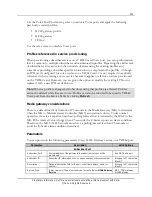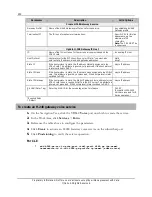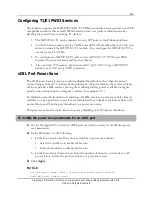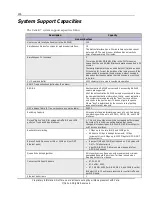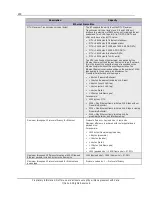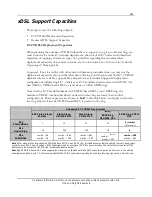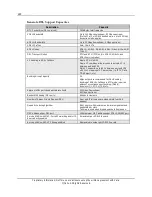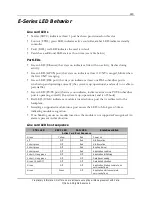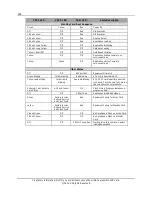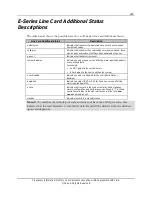
221
Proprietary Information: Not for use or disclosure except by written agreement with Calix.
© Calix. All Rights Reserved.
xDSL Support Capacities
This topic covers the following subjects:
E7-2 VDSL2 Deployment Capacities
General xDSL Support Capacities
E7-2 VDSL2 Deployment Capacities
When planning the number of VDSL2 subscribers to support on a given node and ring, you
must consider the entire E7 network deployment (the sum of all E7 nodes and subscribers,
regardless of topology and access type). For guidelines regarding the recommended
deployment capacities of an access network, see the document
Calix Ethernet Access Networks
Engineering & Planning Guide
.
In general, if not in conflict with other network planning considerations, you may use the
deployment capacities shown in the table below. Doing so will help ensure that E7-2 VDSL2
deployments are scalable, supportable, and perform as intended. Supported deployment
configurations include single E7-2 shelves or E7-2 modular chassis nodes with GPON/AE-
based MCCs, VDSL2-based MCCs, stand-alone or within ERPS rings.
Note that for E7-2 modular chassis with VDSL2-based MCCs in an ERPS ring, the
maximum VDSL2 combo subscribers/node and nodes/ring are lower than in other
configurations. These capacities are shown in
bold
in the table below, and apply to all nodes
in a ring when at least one VDSL2-based MCC is present in the ring.
Supported E7-2 VDSL2 Deployments
ERPS Ring, Single
Shelves
Stand-Alone,
GPON/AE MCC
Stand-Alone,
VDSL2 MCC
(Note 1)
ERPS Ring,
GPON/AE MCC
ERPS Ring, VDSL2
MCC
Max
Shelves/Node
1
10
10
10
5 (combo)
10 (overlay)
Max
Nodes/Ring
16
N/A
N/A
16
8
Max
Subs/Node
combo — 96
overlay — 48
combo — 864
overlay — 432
combo — 960
overlay — 480
combo —
(Note 2)
overlay — 432
combo — 480
overlay — 480
Note 1)
For modular chassis nodes with GPON/AE-based MCCs in an ERPS ring, this table assumes that the entire E7 network deployment
consists of one ERPS ring, 16 nodes, < 8000 subscribers, and an average of 2.5 MACs per subscriber. This limits the total number of MAC
addresses in the network to < 20,000 (the recommended best practice).
Note 2)
A GPON/AE-based MCC node supports the maximum configuration of 864 VDSL2 subscribers per node. However, in line with the
example/assumption in note 1, Calix recommends that 480 VDSL2 subscribers per node be used for planning purposes on a 16-node ring.

